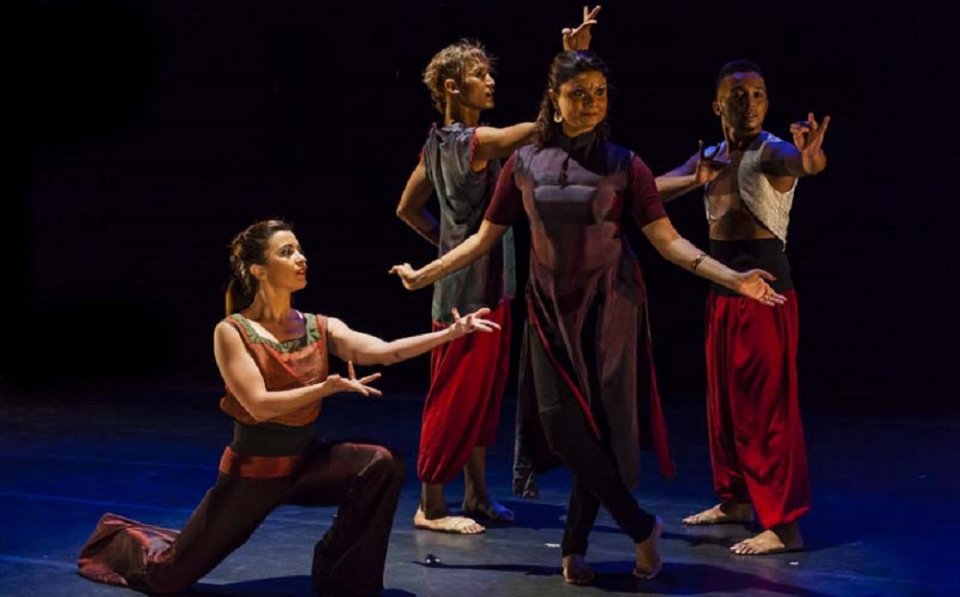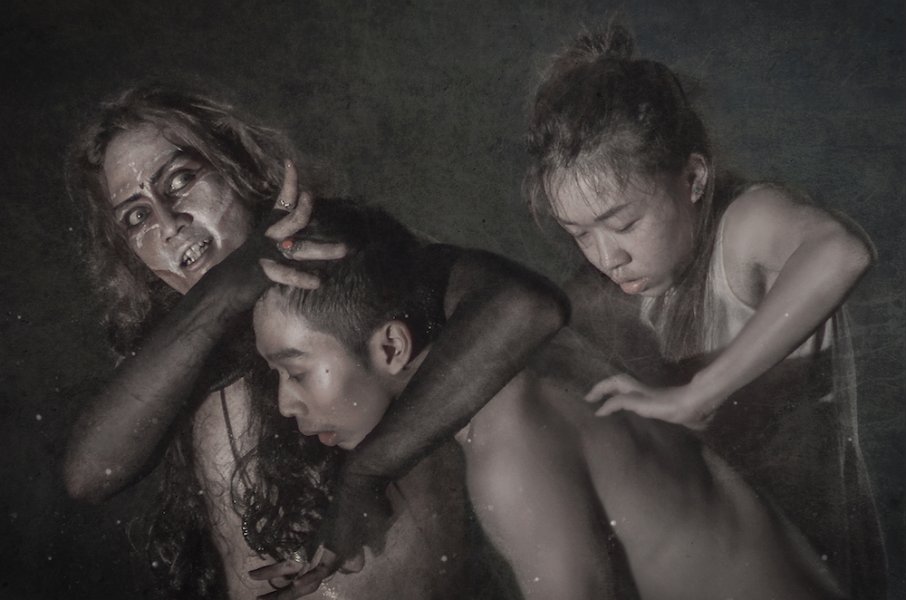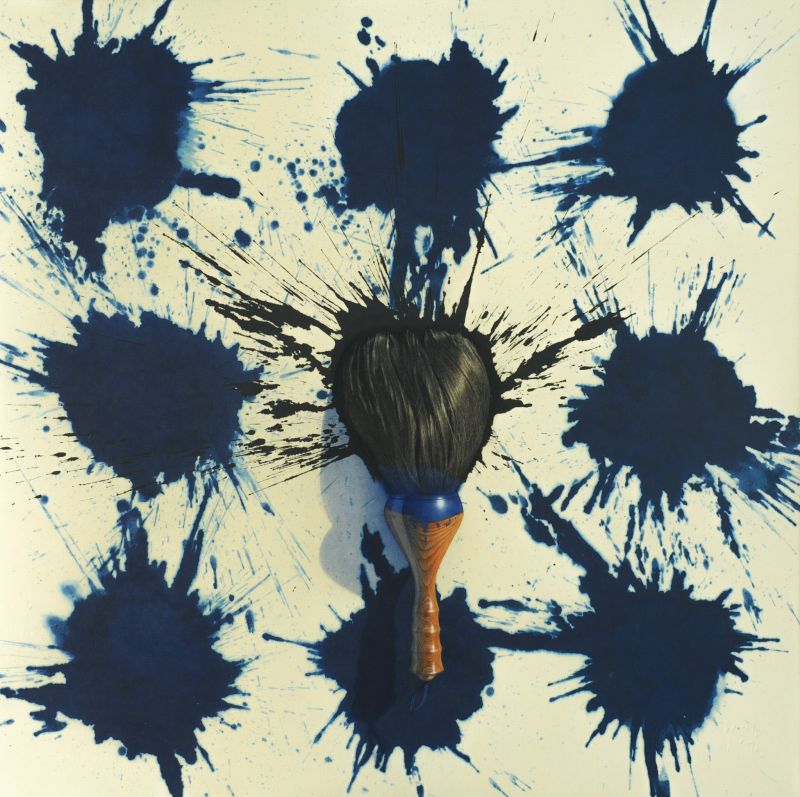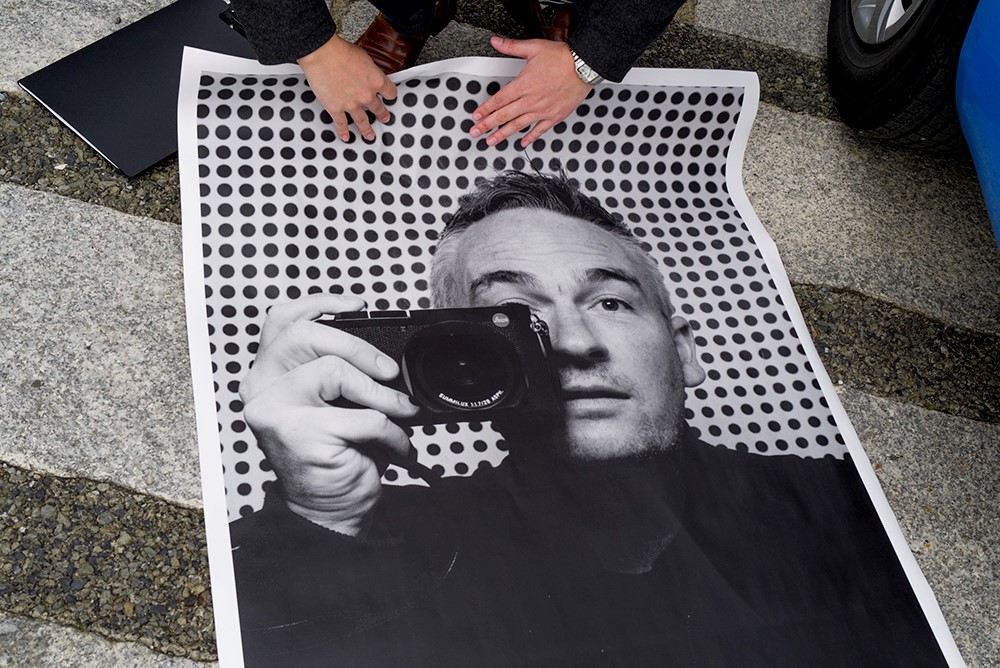“There’s no closure for us; don’t try finding closure.”
This was the first thing 23-year-old Devika Panicker said to Kavitha Krishnan, 47, when the two met to talk about the former’s past of sexual abuse. Krishnan, who is the founder and Artistic Director of local dance company Maya Dance Theatre, had requested a meeting as part of her research for her next production—a contemporary dance performance addressing sexual violence and assault.
She had first learnt of Panicker in 2016, when the victim-survivor had written a Facebook post about her abuse by a family member as a child. Now a spokesperson for sexual assault care at AWARE Singapore, Panicker had turned to photography and dance as a way to overcome and find strength for herself after the abuse.
“That attracted me,” said Krishnan, who had commented to congratulate her on her courage, before shelving the incident to the back of her mind. “The boldness of this individual, striking out there and saying to strangers I’ve been sexually abused, and I’m bold enough to share my story; to be an inspiration to others.”
When the time came for her in 2017 to develop a show understanding domestic sexual violence, AWARE recommended that Krishnan reach out to Panicker—reuniting the two in a show of kismet. Through their conversations, Krishnan realized that the act of abuse itself is not as painful as the aftermath.
As such, the 47-year-old occupational therapist-by training is keen to focus on the realities of sexual abuse, which largely includes coping with life after the abuse. As Panicker had shared, there’s usually no happy ending.
“I was very mindful that I cannot bring the audiences to a position where it’s a fairy tale—‘happily ever after they went on’. You don’t have that; the uncertainty remains, the ripples of the aftermath are for you to deal with. It’s definitely not resolved,” she said.

Maya Dance Theatre in a previous production Grey. Photo credit: Horng Yih
Titled Flowers Don’t Bloom All the Time, the production running from Aug 15-18 at Centre 42 is the third in Maya Dance Theatre’s ongoing series Pancha. Meaning five elements, Pancha embodies nature’s five elements (wind, water, earth, space and fire) in five annual productions exploring concepts deeply rooted in issues in society. More specifically, each one works with female archetypes, and draws parallel information from the Hindu epic world.
The first (Wind), in 2016, worked with loss and the female archetype of the grieving mother, at a time when Krishnan was overwhelmed with news and information about the Syrian War.
The second was Fire, in 2017, and dealt with women’s position in a patriarchal system. She had been interested in finding out whether patriarchal institution, governed by masculine energy, had the potential to offer comfort to women when transformed with a feminine energy. For Krishnan, the system represented fire because “it blazes you, it destroys you; but it can also offer you warmth”.
She was careful to highlight that it’s “not about women against men”; the patriarchy also comprises problematic female figures like mothers-in-law in a difficult family system, and female bosses who “can’t understand female staff and female needs”. In that same vein, Pancha III, working with the element Earth and partly inspired by the character Draupadi from the epic Mahabharata, will talk about sexual domestic violence equally—without excluding the male voice. In the epic, Draupadi is a woman shared by five men, by virtue of the fact that she is married to one and societally expected to service his brothers.

Artwork for Flowers Don’t Bloom All The Time. Photo credit: Guston Rahardjo
Performed by seven dancers—three from Maya Dance Theatre, three guest dancers from Indonesia, and a traditional dancer from Singapore—and a live music ensemble, the show will use real stories omitting names. While there’s no linear narrative, the dancers were each encouraged to create their own characters shaped by the information from the case studies provided to them. Site-specific, it will take audiences through the entire Centre 42 building—a literal manifestation of a house and even a home.
After the production, snapshots taken during the show itself will be put on exhibition at the Esplanade Library from Sep 10-Oct 10. Krishnan and her dramaturg Choi will talk about how they use Dance Theater as a medium to address the particular topic—just one in a line of important pre- and post-show programmes that will lead up to the next Pancha.
“Pancha is not just a production; it has a trail of activities, because it’s a movement,” she asserted. “You can’t just talk about it through the production and then forget about it.”
While Krishnan revealed that she might need more than the usual period of a year to get into the right headspace for Pancha IV, she also added that it will explore inclusiveness in our society. From the perspective of a transgender, the show is expected to talk about various neglected groups beyond just the LGBT community—such as the elderly, people with disabilities, ex-convicts, and disadvantaged children and youth, to start. The representing element is hence Space.
She is reserving the element of Water for her final production, as a “wishlist of dreaming forward for society”. “Water for me is life, is rebirth, is pure; so it’s change”, said Krishnan.
She certainly has a lot on her plate, but making change is a burden she is willing to bear. “There’s no point complaining that our society is as such; we need to make a change, and that change is an ongoing process,” she said.
“I think it’s very important that an arts group is able to address concerns of our society, because art is not to be alienated from us. It’s not just an elite subject. It holds the pulse of the community, and it should.”
Our interview continues below.
Walk us through your entire process for Pancha III.
(Devika’s story) really caught me in 2016, while I was looking at the first Pancha. So I kept it in my system, and it reappeared again as I was walking through from (Pancha) I to II; III was very clear that it was going to talk about home, because the element is Earth. Earth is home for me—and representative of family, of a comfort space.
With her permission, I decided to use her story as an inspiration board for me—not to tell her story, but rather her character as a springboard for me to then propel the other scenes, the other stories we want to talk about. So what we did was we approached the SCWO (Singapore Council of Women’s Organisations) at Waterloo St, and we went to speak to the senior counsellors there, because we had no access to the victim-survivors.
They showed us some of the visual paintings that were done during the art therapy sessions, and what was striking out for me was the hands—most of the pictures had hands. They were either hands that were destroying somebody, or crushing somebody’s hope, or they were hands that were comforting, giving warmth; security. I saw the hands as another inspiration that I needed to use in the craft-making.
How does this production talk about sexual assault?
I didn’t just focus on sexual assault, because sexual assault is part of a violent game. It’s not like rape where it exists just by itself. This is conducted by family members, by people who are familiar to you. So it usually starts out with an emotional abuse, then it goes on to physical abuse, and then sexual abuse. It’s very difficult to break the cycle of pain and abuse.
When my dramaturg Jeremiah Choi came into the work, he then further expanded the materials for us to think beyond women—what about the men? Don’t we want to hear those voices where they are violated too, or where they have been in a situation where the violation was never heard because it’s a gender-specific topic?
In this work there’s no linear narrative, there’s no instructional journey. But there is a space where we want to connect, and I want to see whether society is willing to connect with me. The last scene is kept very open—do you want to engage? Do you want to be an observer; or do you want to make a difference?
How do you convey all of that through dance?
The layers are all very complicated, but we’re trying our best, because we don’t have a narrative text. It’s not theater, where there is a text to speak. I always tell people who come to see a work from us—don’t frame us into a dance form; because we’re not using a dance form to bring out a technicality. We’re using the body as a voice to express a story.
I have to park it in the dancers, because most of the dancers are coming as just dancers. I gave the metaphor to them—how do you lead a blind person? You walk together with them. For victim-survivors, if you want them to be victim-victors, we need to walk with them; we need to take every step of theirs together. That stride cannot be any larger, any smaller; it has to be together with them.
You’re incorporating true stories from Singapore and Indonesia. Are the stories distinctive of the Asian experience?
I guess certain things run across East and West—pain, grief, abuse. But the methods through which the individual deals with it could be different. In Asia we are very much suppressed from talking about it. Why I can say that is because I couldn’t get many partners to come onboard, to talk along with us about domestic sexual violence. Some community outreach partners said very clear-cut ‘we’re not going to talk about that’.
We actually wanted to do a visual arts exhibition and lead people into a discussion after, and the question (asked) was ‘What will you be talking about? Because we’ve got to be very mindful of the age group of people who are coming.’ And I was cringing, because I need the younger ones to come; because they are the ones who are manipulated and become victims. And then they get to my age and sit down and ask themselves ‘What was right and wrong? I can’t figure out if I was touched wrongly.’ It’s too late. Children need to hear and know.
You haven’t gotten a rating for the show. Do you think it’ll be above PG13?
I hope not, because I’m not explicitly showing the act. And it’s dance. It’s a bit safer for me because I don’t have text and words to bring the gruesomeness and the brutality of the scenes. And I’m also not touching the act, because the act is not what I need. I’m looking at the body that is stripped off its dignity after the act. And I want this body to blossom; I want this soul to bloom, so that it’s able to move forward again and find itself in our society.
Are you concerned that the show might be potentially triggering to victim-survivors attending?
I am. So I’m planting some of my volunteer counsellors; lawyer Malathi Das and Dr. Sudha from PAVE will be there, and I’ll be there. And my dancers will be there. SCWO is located just a few blocks away, and they’re also willing to offer support for us over the four nights. I feel sometimes you don’t need expert knowledge all the time as the first (point of) help; a person to listen is good enough.
Did your ideation have anything to do with the #MeToo movement?
You know, it’s strange—I didn’t think about it; it didn’t feed into (my process). Actually I’m not very supportive of it—reason being one, I’m only hearing the female voices; I’m losing out on my male counterparts who could also be victimized. And two, I’m also questioning—by making this a brand, because it’s like a bandwagon that everybody jumps on right, are we triggering people to become victims in their mind so they can seek empathy; or worse still, sympathy? ‘I’m left out, so I better go and write a story that maybe I have been abused, and everybody is going to pour all the empathy on me because I have a greed to come forward and say it’s me too.’ I’m very worried about that.
What have you learnt from this journey creating Pancha III?
For me it became (apparent) that society is very easy; it’s very quick to give advice. But is that what they want? When we spoke to Devika, she said ‘I don’t want advice from you; I just want you to listen, and sometimes that’s all we need.’
Flowers Don’t Bloom All the Time runs from Aug 15-18 at Centre 42. Tickets available here and more information here.





